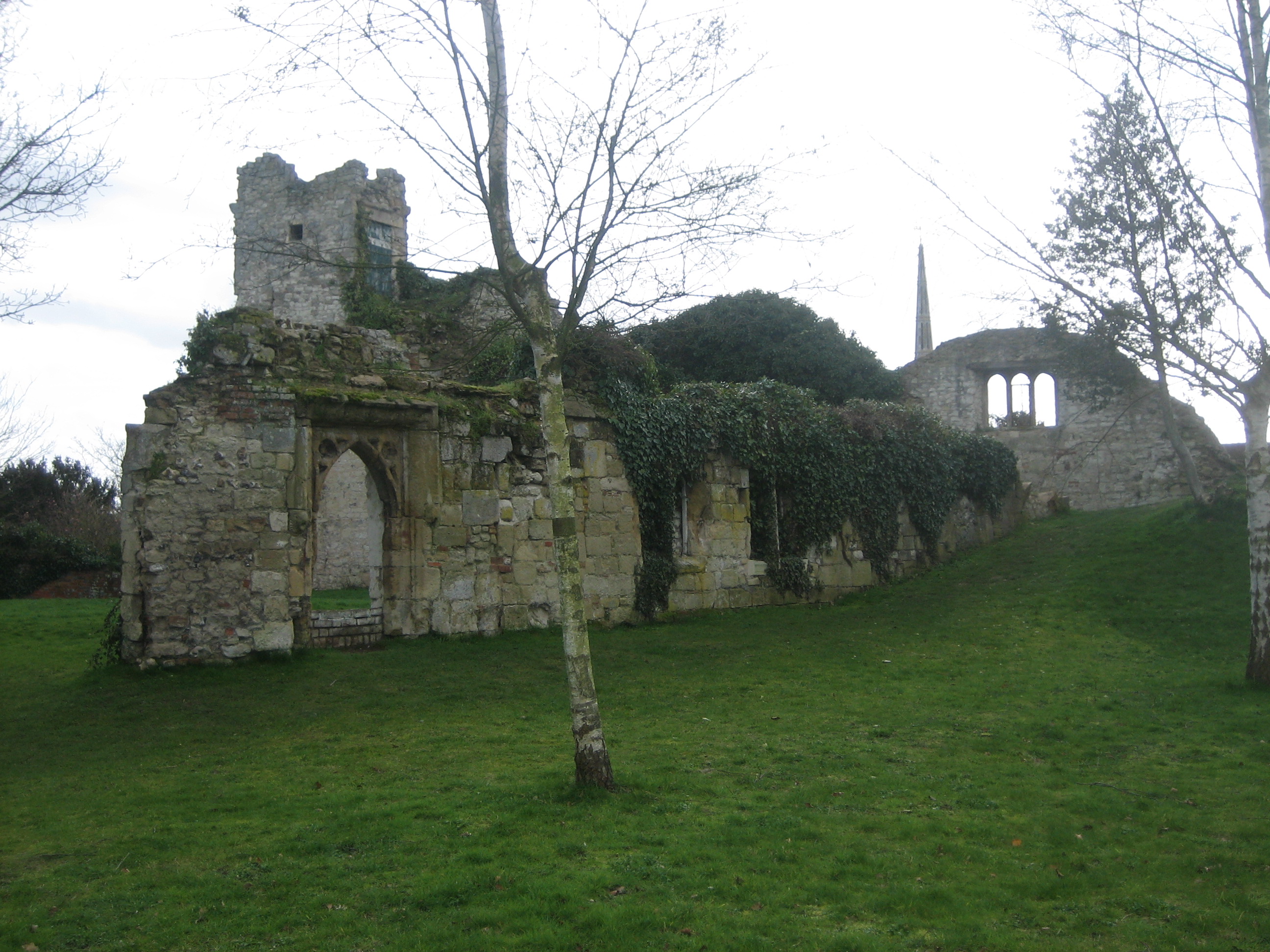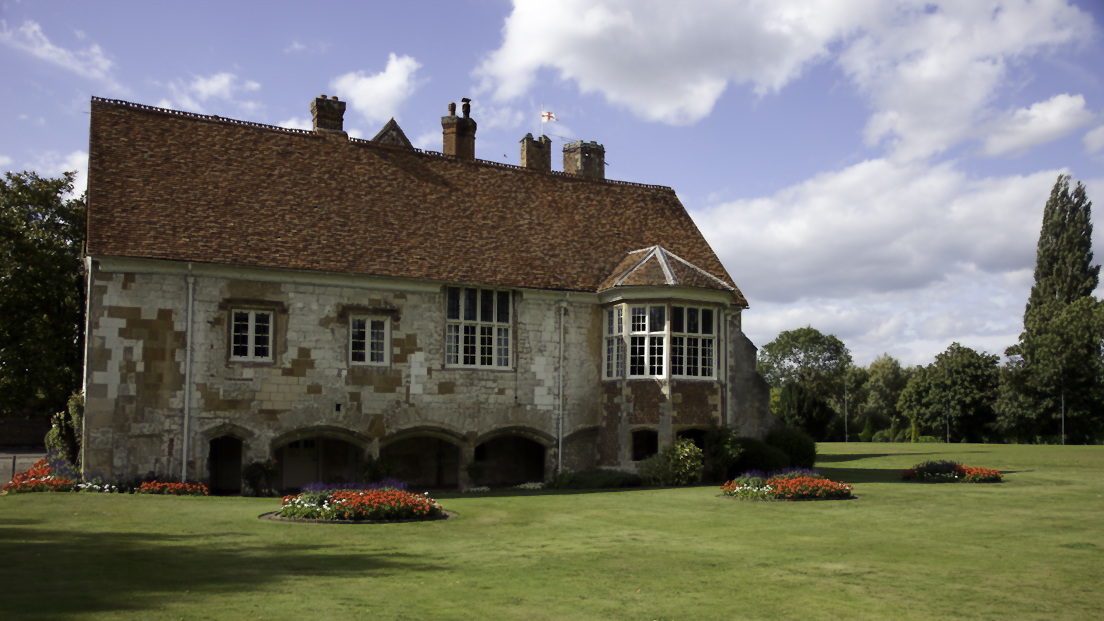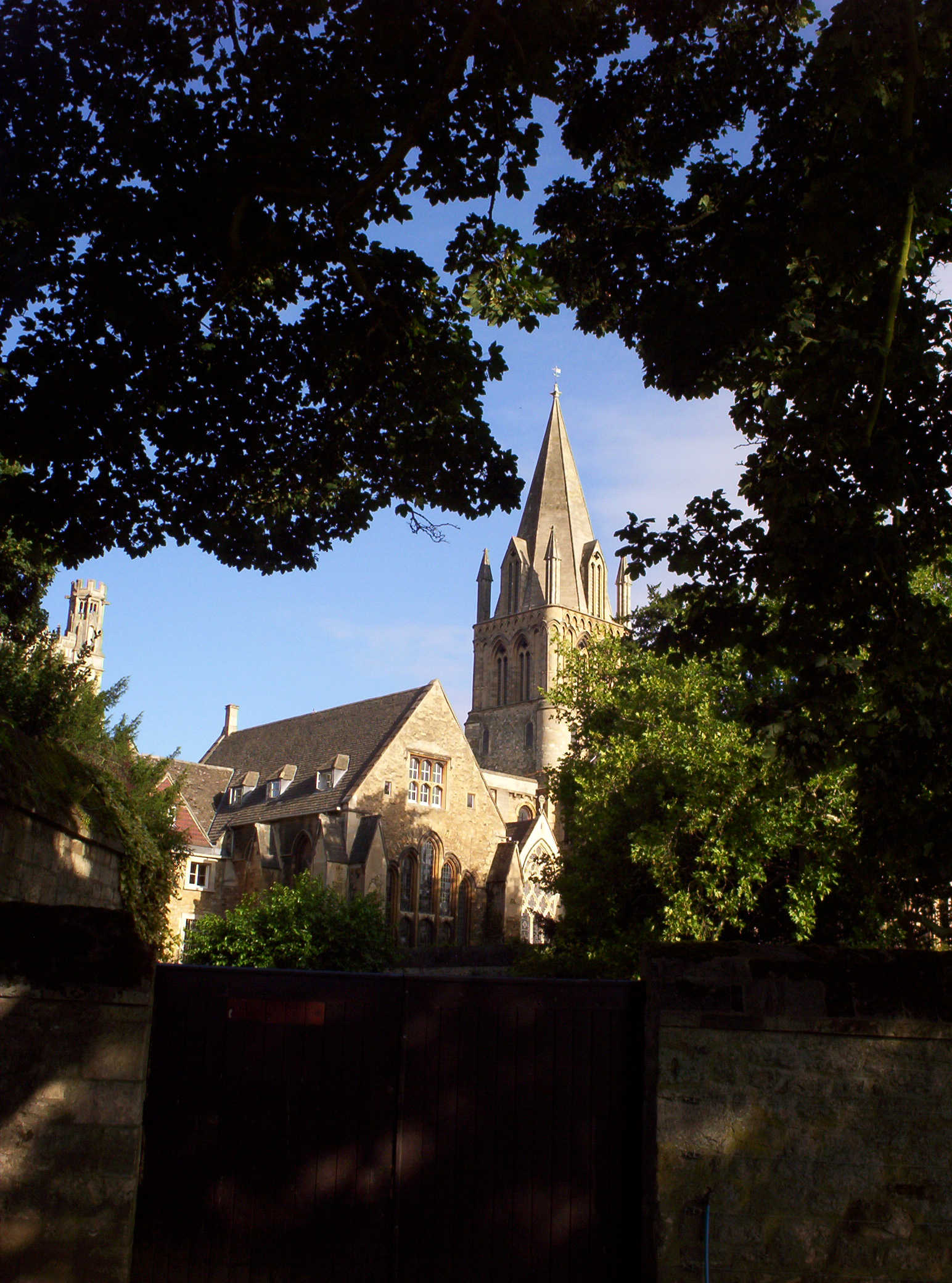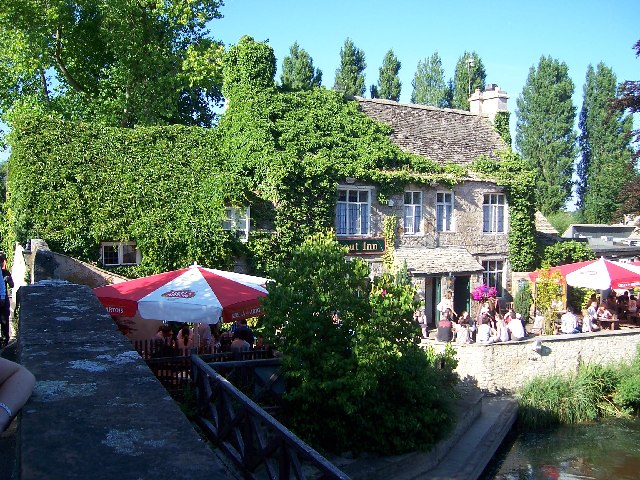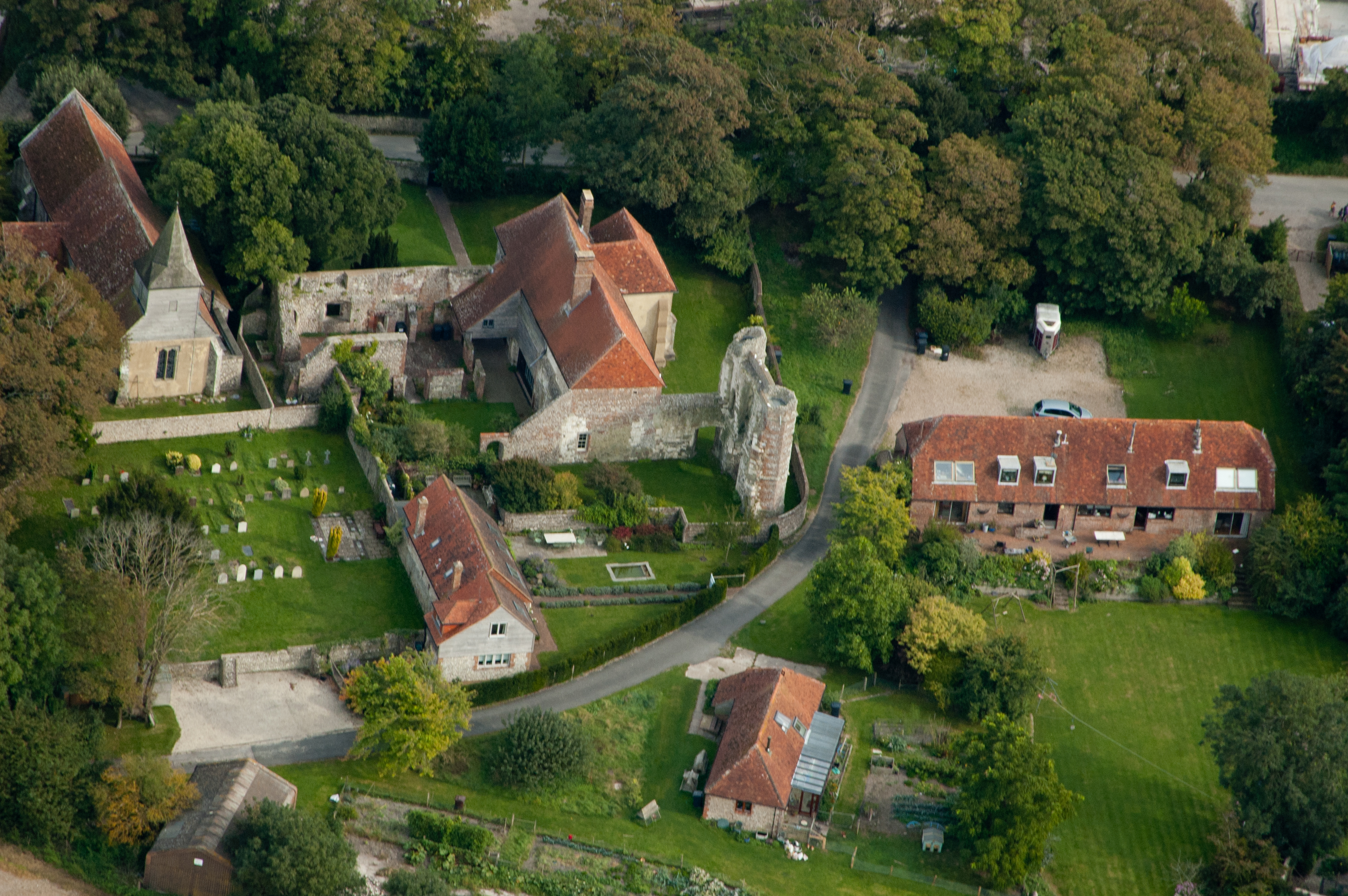|
Ickford
Ickford is a village and civil parish in the unitary authority area of Buckinghamshire, England. It is on the boundary with Oxfordshire, about west of the market town of Thame. The River Thame forms both the southern boundary of the parish and Ickford's part of the county boundary with Oxfordshire. A stream that is a tributary of the Thame bounds the parish to the west and north. Toponym The village toponym is derived from Old English meaning "Icca's ford". The Domesday Book of 1086 records it as ''Iforde''. From the 12th to the 14th centuries it evolved through ''Ycford'', ''Hicford'', ''Hitford'', ''Ikeford'' and ''Ickeforde'' before later reaching its present form. Manors The Domesday Book records that Miles Crispin held four hides of land at Ickford. Crispin was linked with Wallingford Castle, and through him the manor of Ickford became part of the Honour of Wallingford. In the 13th century the Appleton family were the lower lords of this manor. It is not recorded who he ... [...More Info...] [...Related Items...] OR: [Wikipedia] [Google] [Baidu] |
Ickford StNicholas TippingMonument 19233
Ickford is a village and civil parish in the unitary authority area of Buckinghamshire, England. It is on the boundary with Oxfordshire, about west of the market town of Thame. The River Thame forms both the southern boundary of the parish and Ickford's part of the county boundary with Oxfordshire. A stream that is a tributary of the Thame bounds the parish to the west and north. Toponym The village toponym is derived from Old English meaning "Icca's ford". The Domesday Book of 1086 records it as ''Iforde''. From the 12th to the 14th centuries it evolved through ''Ycford'', ''Hicford'', ''Hitford'', ''Ikeford'' and ''Ickeforde'' before later reaching its present form. Manors The Domesday Book records that Miles Crispin held four hides of land at Ickford. Crispin was linked with Wallingford Castle, and through him the manor of Ickford became part of the Honour of Wallingford. In the 13th century the Appleton family were the lower lords of this manor. It is not recorded who hel ... [...More Info...] [...Related Items...] OR: [Wikipedia] [Google] [Baidu] |
Office For National Statistics
The Office for National Statistics (ONS; cy, Swyddfa Ystadegau Gwladol) is the executive office of the UK Statistics Authority, a non-ministerial department which reports directly to the UK Parliament. Overview The ONS is responsible for the collection and publication of statistics related to the economy, population and society of the UK; responsibility for some areas of statistics in Scotland, Northern Ireland and Wales is devolved to the devolved governments for those areas. The ONS functions as the executive office of the National Statistician, who is also the UK Statistics Authority's Chief Executive and principal statistical adviser to the UK's National Statistics Institute, and the 'Head Office' of the Government Statistical Service (GSS). Its main office is in Newport near the United Kingdom Intellectual Property Office and Tredegar House, but another significant office is in Titchfield in Hampshire, and a small office is in London. ONS co-ordinates data collection wi ... [...More Info...] [...Related Items...] OR: [Wikipedia] [Google] [Baidu] |
Honour Of Wallingford
The Honour of Wallingford (or feudal barony of Wallingford) was a medieval English feudal barony which existed between 1066 and 1540 with its ''caput'' at Wallingford Castle in present-day Oxfordshire. The Honour of Wallingford was established after the Norman Conquest of England in 1066. The Honour initially comprised the manors of Wallingford and Harpsden and thereafter gained numerous other manors. In the late 11th century Miles Crispin(d.1107) held the larger of the 2 estates contained within the manor of Alkerton in Oxfordshire, as part of the Honour of Wallingford.Lobel & Crossley, 1969, pages 44-53 After Crispin's death in 1107 his widow Maud supported the Empress Matilda during the Anarchy. When King Stephen defeated Matilda, Maud entered a religious houseLobel, 1964, pp. 16-43 and King Stephen gave her estate to Henry, Duke of Normandy. This made Aston Rowant part of the Honour of Wallingford. The Honour of Wallingford also included Newton Purcell. The honour of Wal ... [...More Info...] [...Related Items...] OR: [Wikipedia] [Google] [Baidu] |
Bisham Priory
Bisham Abbey is a Grade I listed manor house at Bisham in the English county of Berkshire. The name is taken from the now lost monastery which once stood alongside. This original Bisham Abbey was previously named Bisham Priory, and was the traditional resting place of many Earls of Salisbury. The complex surrounding the extant manorial buildings is now one of three National Sports Centres run on behalf of Sport England and is used as a residential training camp base for athletes and teams and community groups alike. It is a wedding venue with a licence for civil ceremony and is used for conferences, team building events, corporate parties and private functions. Manor house The manor house was built around 1260 as a community house for two Knights Templar. There was substantial rebuilding and alteration in later centuries. When the Templars were suppressed in 1307, King Edward II took over the manorial rights, granting them to various relatives. In 1310 the building was used as a ... [...More Info...] [...Related Items...] OR: [Wikipedia] [Google] [Baidu] |
Priory Of St Frideswide, Oxford
St Frideswide's Priory was established as a priory of Augustinian canons regular, in 1122. The priory was established by Gwymund, chaplain to Henry I of England. Among its most illustrious priors were the writers Robert of Cricklade and Philip of Oxford. The original nunnery founded by Frideswide was destroyed in 1002. After that there was a monastery of Augustinian canons. In 1524, Cardinal Wolsey dissolved the Priory, using funds from the dissolution of Wallingford Priory and other minor priories. He then used its premises, together with those of other adjacent religious houses, to found a new college to be called Cardinal College on the land where the Priory once stood. After Wolsey fell from power in 1530, King Henry VIII took over the nascent foundation, which he renamed Christ Church ("''Aedes Christi''"). The Church's five western bays of the nave made during the time of the Augustinian canons were demolished to make space to build the main quadrangle of the new co ... [...More Info...] [...Related Items...] OR: [Wikipedia] [Google] [Baidu] |
Godstow
Godstow is about northwest of the centre of Oxford. It lies on the banks of the River Thames between the villages of Wolvercote to the east and Wytham to the west. The ruins of Godstow Abbey, also known as Godstow Nunnery, are here. A bridge spans the Thames and the Trout Inn is at the foot of the bridge across the river from the abbey ruins. There is also a weir and Godstow lock. History Godstow Abbey (see detailed history below) was built here, starting in 1133. It housed an order of Benedictine nuns. Rosamund Clifford, the mistress of King Henry II, retired here and died at 30 in about 1177. Her grave is somewhere in the grounds but now lost. The abbey was suppressed in 1539 under the Second Act of Dissolution. The abbey was then converted into Godstow House by George Owen. It was occupied by his family until 1645, when the building was badly damaged in the English Civil War. After this damage, the building fell into disrepair and was used by the locals as a source of ston ... [...More Info...] [...Related Items...] OR: [Wikipedia] [Google] [Baidu] |
William De Montacute, 2nd Earl Of Salisbury
William Montagu, 2nd Earl of Salisbury, 4th Baron Montagu, King of Mann, KG (25 June 1328 – 3 June 1397) was an English nobleman and commander in the English army during King Edward III's French campaigns in the Hundred Years War. He was one of the Founder Knights of the Order of the Garter. Biography Lord Salisbury was born in Donyatt in Somerset, the eldest son of William Montagu, 1st Earl of Salisbury and his wife Catherine Grandison. One of his sisters, Philippa (d. 5 January 1382) was the wife of Roger Mortimer, 2nd Earl of March. Lord Salisbury succeeded his father as earl in 1344. On 13 July 1346, he was made a Knight Bachelor. In 1348, Lord Salisbury, at this time married to the King's first cousin, was one of the knights admitted at the foundation of the Order of the Garter. First marriage In the early 1340s, Lord Salisbury was married to Joan of Kent, a first cousin of the King, and a princess of England. Both Lord Salisbury and his bride were of exactly the same ... [...More Info...] [...Related Items...] OR: [Wikipedia] [Google] [Baidu] |
Sussex
Sussex (), from the Old English (), is a historic county in South East England that was formerly an independent medieval Anglo-Saxon kingdom. It is bounded to the west by Hampshire, north by Surrey, northeast by Kent, south by the English Channel, and divided for many purposes into the ceremonial counties of West Sussex and East Sussex. Brighton and Hove, though part of East Sussex, was made a unitary authority in 1997, and as such, is administered independently of the rest of East Sussex. Brighton and Hove was granted city status in 2000. Until then, Chichester was Sussex's only city. The Brighton and Hove built-up area is the 15th largest conurbation in the UK and Brighton and Hove is the most populous city or town in Sussex. Crawley, Worthing and Eastbourne are major towns, each with a population over 100,000. Sussex has three main geographic sub-regions, each oriented approximately east to west. In the southwest is the fertile and densely populated coastal plain. Nort ... [...More Info...] [...Related Items...] OR: [Wikipedia] [Google] [Baidu] |
Wilmington Priory
Wilmington Priory was a Benedictine priory in the civil parish of Long Man, East Sussex, England. The surviving building is now owned by the Landmark Trust and let as holiday accommodation. It is both a Grade I listed building and a scheduled monument. History Wilmington Priory was founded in the mid 11th century as a small alien cell of St Mary by Herluin de Conteville. It was enlarged in 1243 to create a priory, but primarily run as a grange to maintain the lands held in the area by the Benedictine monks of Grestain Abbey in Normandy. The building was fortified in the 14th century with a portcullis and a three-storey drum tower, which was demolished in the 18th century. The grange was suppressed along with other alien cells in 1414, and given to the Dean and Chapter of Chichester Cathedral, who in 1565 granted it to Sir Richard Sackville. About 1700 the estate passed to the Compton family, later Earls of Wilmington. It passed by marriage from them to the Cavendish family, an ... [...More Info...] [...Related Items...] OR: [Wikipedia] [Google] [Baidu] |
Mesne Lord
A mesne lord () was a lord in the feudal system who had vassals who held land from him, but who was himself the vassal of a higher lord. Owing to ''Quia Emptores'', the concept of a mesne lordship technically still exists today: the partitioning of the lord of the manor's estate among co-heirs creating the mesne lordships. In an English court of law in 1863 it was claimed that "the lord of the mesne manor pays a rent to a superior lord and that rent empowers him to receive chief rents from certain farms". A mesne lord did not hold land directly of the king, that is to say he was not a tenant-in-chief. His subinfeudated estate was called a "mesne estate" or ''Afterlehen'' in the Holy Roman Empire. Traditionally, he is a lord of the manor who holds land from a superior lord and who usually lets some of the land to a tenant. He was thus an intermediate or "middle" tenant, which status is reflected in the Old French word ''mesne'', in the modern French language ''moyen''. The mes ... [...More Info...] [...Related Items...] OR: [Wikipedia] [Google] [Baidu] |
Grestain Abbey
Grestain Abbey (or ''Grestein'' Abbey, french: Abbaye Notre-Dame de Grestain) was an 11th-Century Benedictine monastery near the town of Fatouville-Grestain, which is located in the modern-day Eure ''département'' of Upper Normandy, France. The abbey was in the Catholic Diocese of Lisieux. Closely associated with the family of William, Duke of Normandy, the abbey was instrumental in the Normans taking control over the Church in England in the centuries following the Norman Conquest of England, establishing new churches and priories in England, and Abbots of Grestain ordained many English priests. Many churches mentioned in the Domesday Book of 1086 cite Grestain as the founding establishment. History The Abbey was founded in 1050 by Herluin de Conteville and his wife Arlette, mother of William the Conqueror. Herluin, a victim of leprosy, was said to have seen a vision of the Blessed Virgin Mary who told him to take a spa treatment at the source of the Carbec stream in Grestain ... [...More Info...] [...Related Items...] OR: [Wikipedia] [Google] [Baidu] |
Order Of Saint Benedict
The Benedictines, officially the Order of Saint Benedict ( la, Ordo Sancti Benedicti, abbreviated as OSB), are a Christian monasticism, monastic Religious order (Catholic), religious order of the Catholic Church following the Rule of Saint Benedict. They are also sometimes called the Black Monks, in reference to the colour of their religious habits. They were founded by Benedict of Nursia, a 6th-century monk who laid the foundations of Benedictine monasticism through the formulation of his Rule of Saint Benedict. Despite being called an order, the Benedictines do not operate under a single hierarchy but are instead organised as a collection of autonomous monasteries. The order is represented internationally by the Benedictine Confederation, an organisation set up in 1893 to represent the order's shared interests. They do not have a superior general or motherhouse with universal jurisdiction, but elect an Abbot Primate to represent themselves to the Holy See, Vatican and to the worl ... [...More Info...] [...Related Items...] OR: [Wikipedia] [Google] [Baidu] |


